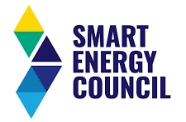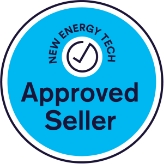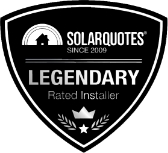Ever-evolving technologies are reshaping the landscape of solar energy, making it not only environmentally conscious but also financially appealing. With the recent announcement of a generous $4000 rebate through the QLD Government Solar Battery Rebate, the dynamics of solar batteries are undergoing a significant shift. This incentive has sparked considerable interest, leading many to view it as an opportune moment to embrace solar batteries in QLD.
The QLD Government’s commitment to fostering sustainable practices is evident in this rebate program, aiming to empower households and propel the state towards a greener, more energy-efficient future. As we explore the possibilities this rebate brings, it becomes clear that now is a compelling time to consider if integrating solar batteries into your energy strategy would be in your best interest.
In the following sections, we’ll delve into the various aspects of this rebate, shedding light on its potential to enhance your energy independence and the possibility of long-term financial savings.
FROM AN ENVIRONMENTAL STANDPOINT
At its core, the Queensland Solar Battery Rebate Program 2024 encourages the widespread adoption of solar technology, heralding a significant shift towards cleaner, greener energy solutions. The QLD solar battery rebate encourages the adoption of solar technology, which harnesses energy from the sun, a renewable and virtually limitless resource.
How exactly does a solar battery fit into your solar power system? Any power you generate during daytime through your solar power system and don’t use (excess power), is stored in a solar battery. At night, when solar generation has stopped, the battery kicks in to provide the household with that excess power. This maximises your use of self-generated solar energy, reducing reliance on the grid. This also means you significantly lower your carbon footprint and become a contributor to a more sustainable future.
You can learn more about solar batteries by checking the following links:
By transitioning to solar energy, QLD households reduce their reliance on fossil fuels, which are finite resources and major contributors to air and water pollution. Solar technology generates electricity without emitting greenhouse gases such as carbon dioxide, methane, and nitrous oxide, which are major drivers of climate change.
Therefore, increased adoption of solar technology facilitated by the QLD solar battery rebate can significantly decrease greenhouse gas emissions, mitigating the adverse effects of climate change. By promoting a cleaner energy future, the rebate contributes to environmental sustainability, preserving ecosystems, and safeguarding natural resources for future generations.
FROM AN ECONOMIC PERSPECTIVE
Beyond its environmental benefits, the rebate presents compelling economic incentives for QLD homeowners. The scheme provides rebates of up to $4,000 to qualified homeowners in Queensland, supported by a combined investment of $24 million from both federal and state governments. This ambitious endeavour aims to benefit approximately 4,000 households in QLD.
By investing in solar battery systems, Queenslanders can effectively harness solar energy to power their homes, reducing dependence on traditional grid electricity thereby potentially lowering electricity bills over time. The possible long-term financial benefits of solar energy, coupled with the rebate, make it an attractive investment for QLD homeowners seeking to lower their energy costs.
While the rebate offers numerous benefits, its effectiveness may vary depending on individual circumstances such as household energy consumption patterns, solar system size, and eligibility criteria.
Factors such as location, orientation of the property, available sunlight, and regulatory requirements may also influence the feasibility and impact of installing solar battery systems.
Therefore, it’s essential for Queenslanders to carefully evaluate their specific situation, conduct a cost-benefit analysis, and consider factors such as upfront costs, long-term savings, and environmental impact before deciding to participate in the QLD solar battery rebate program.
AM I ELIGIBLE TO PARTICIPATE IN THE QLD SOLAR BATTERY REBATE PROGRAM?
To be eligible for this initiative, there are specific criteria that households have to adhere to. Here’s what we know about it so far.
Minimum Requirements for the Queensland Solar Battery Rebate Program 2024:
- Annual household taxable income must not exceed $180,000.
- The rebate amount varies based on income:
- Below $66,667: Eligible for a $4,000 rebate.
- $66,667 to $180,000: Eligible for a $3,000 rebate.
- Purchase of the solar battery must occur during the program period and after conditional approval.
- Solar battery must have a minimum size of 6 kWh from an approved list.
- Minimum requirement of a 5 kW solar PV system installed.
- Installation must be carried out by an approved installer.
CLOSING THOUGHTS
In summary, the QLD Solar Battery Rebate Program offers a remarkable chance for Queenslanders to embrace sustainable energy solutions and potentially secure long-term savings. By advocating for the adoption of solar technology, the initiative aims to diminish reliance on finite fossil fuels and curtail greenhouse gas emissions, thereby paving the way for a cleaner, greener future.
From an economic standpoint, the rebate provides tangible financial incentives, including up to $4000 in government assistance for eligible households and the potential for reduced electricity bills, empowering Queenslanders to take charge of their energy usage and allocate funds more flexibly.
However, it’s crucial for QLD households to meticulously assess their individual circumstances, considering factors such as energy consumption patterns and eligibility criteria, before engaging in the program. By making an informed decision, Queenslanders can determine whether participating in the rebate aligns with their individual goals and is in their best interest.








